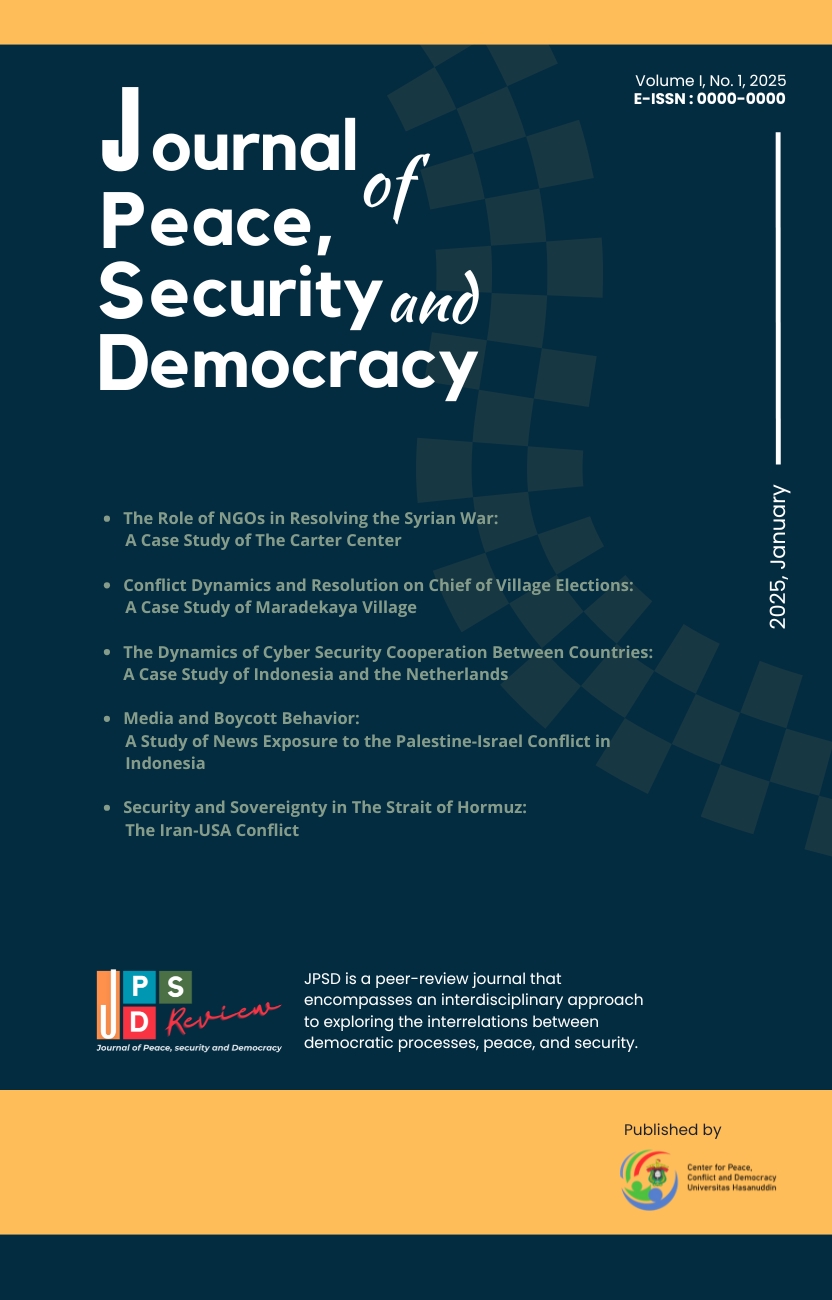Conflict Dynamics and Resolution in Chief of Village Elections
A Case Study of Maradekaya Village
Keywords:
conflict resolution, chief in village, election, local politics, village government, indonesiaAbstract
Chief of Village Election is an essential local democratic agenda in the transition of village-level leadership, but it often becomes a source of significant social conflict. This study explores the Pilkades conflict in Maradekaya Village, Gowa Regency, in 2016 using a descriptive qualitative approach. The conflict was triggered by personal competition between candidates, the low socio-economic conditions of the community, and the inability of the election committee to maintain firmness and neutrality in the election process. The three candidates—who had strong support bases and different political backgrounds—formed dynamic alliances and feuds, creating political tensions that culminated in acts of mass violence. This tension was exacerbated by the social conditions of the community, dominated by residents with low levels of education and a strong paternalistic culture, which made them vulnerable to pragmatic politics based on money and social pressure. This study uses Burton's Conflict Resolution Theory and maps the conflict resolution approach into two main mechanisms, namely negotiation and mediation. Negotiations between candidates resulted in a decision to re-elect as an effort to avoid further escalation of the conflict. However, the implementation of mediation by the election committee was unsuccessful due to a lack of legitimacy and firmness. In contrast, mediation conducted by the Bajeng Sub-district Head showed more effective results with an evaluative approach that emphasized decision-making based on majority vote and consensus. The results of the study indicate that the Maradekaya Pilkades conflict reflects the complexity of local politics involving structural, cultural, and personal dimensions. Effective conflict resolution requires strengthening the capacity of local institutions, increasing political education of the community, and implementing a consensus-based mediation strategy involving figures who have authority and public trust. This study emphasizes the importance of the role of professional and neutral mediation in preventing social fragmentation that can disrupt the stability of democracy at the village level.Downloads
Published
2025-01-30
How to Cite
Kasmat, Z., Yunus, A., & Nadir, S. (2025). Conflict Dynamics and Resolution in Chief of Village Elections: A Case Study of Maradekaya Village. Journal of Peace, Security and Democracy, 1(1), 16–36. Retrieved from https://journal.unhas.ac.id/index.php/jpsd/article/view/42521
License
Copyright (c) 2025 Zukhrufi Kasmat, Ariana Yunus, Sakinah Nadir

This work is licensed under a Creative Commons Attribution-NonCommercial-ShareAlike 4.0 International License.





